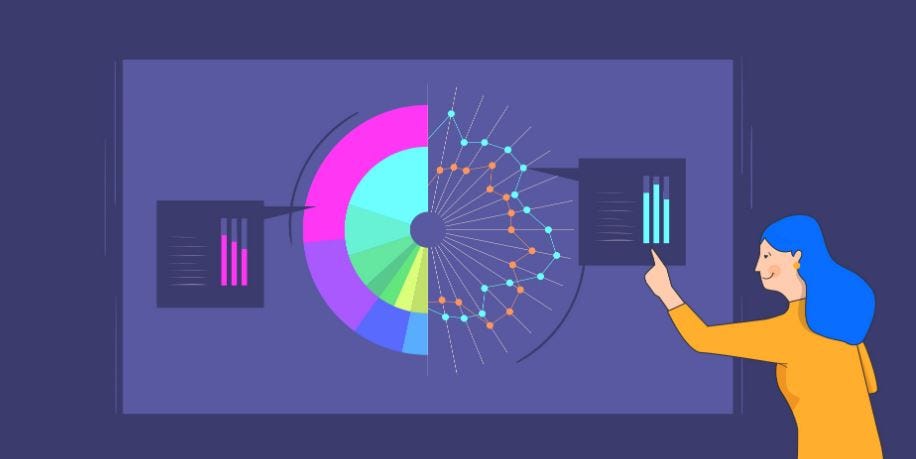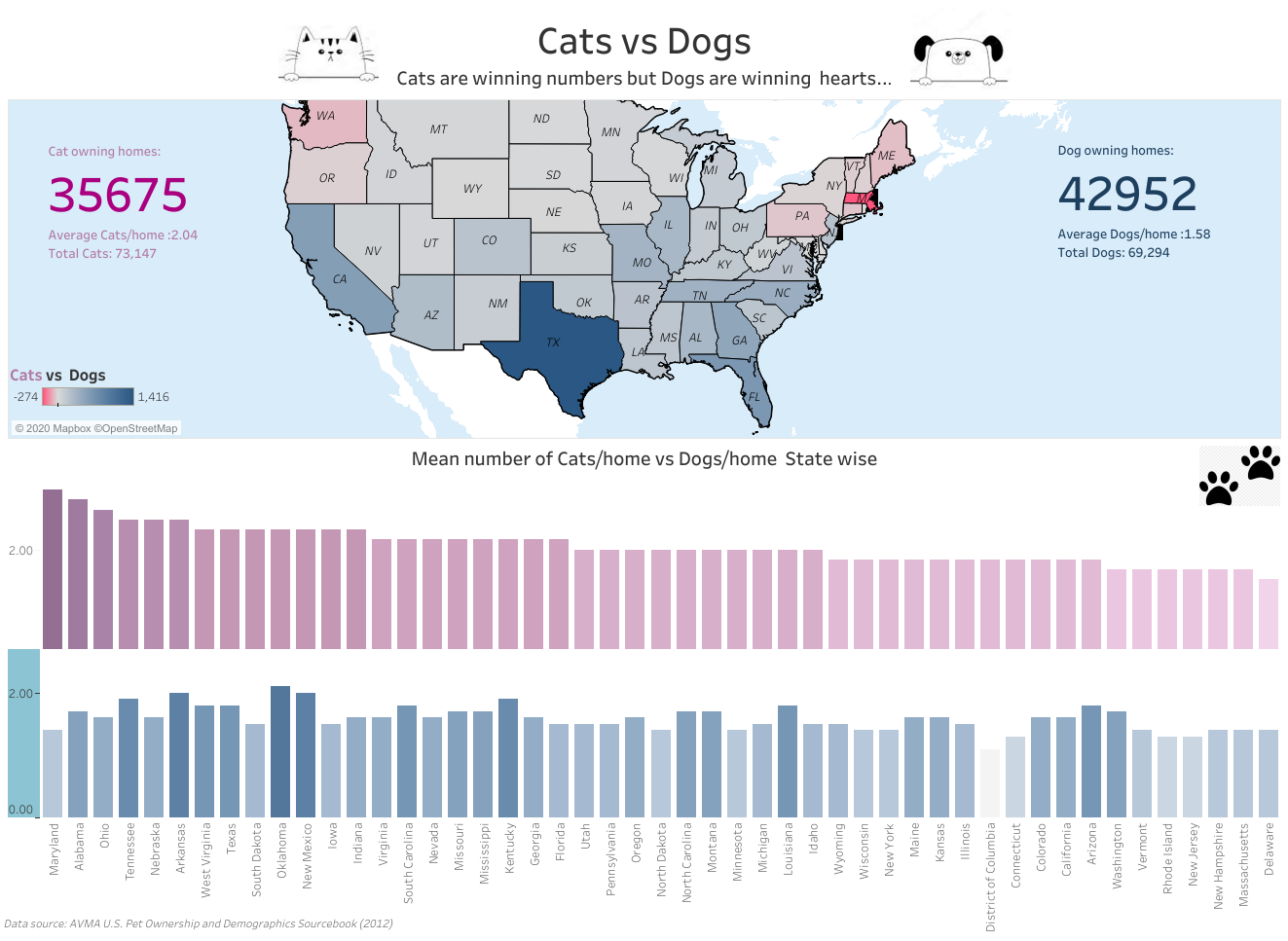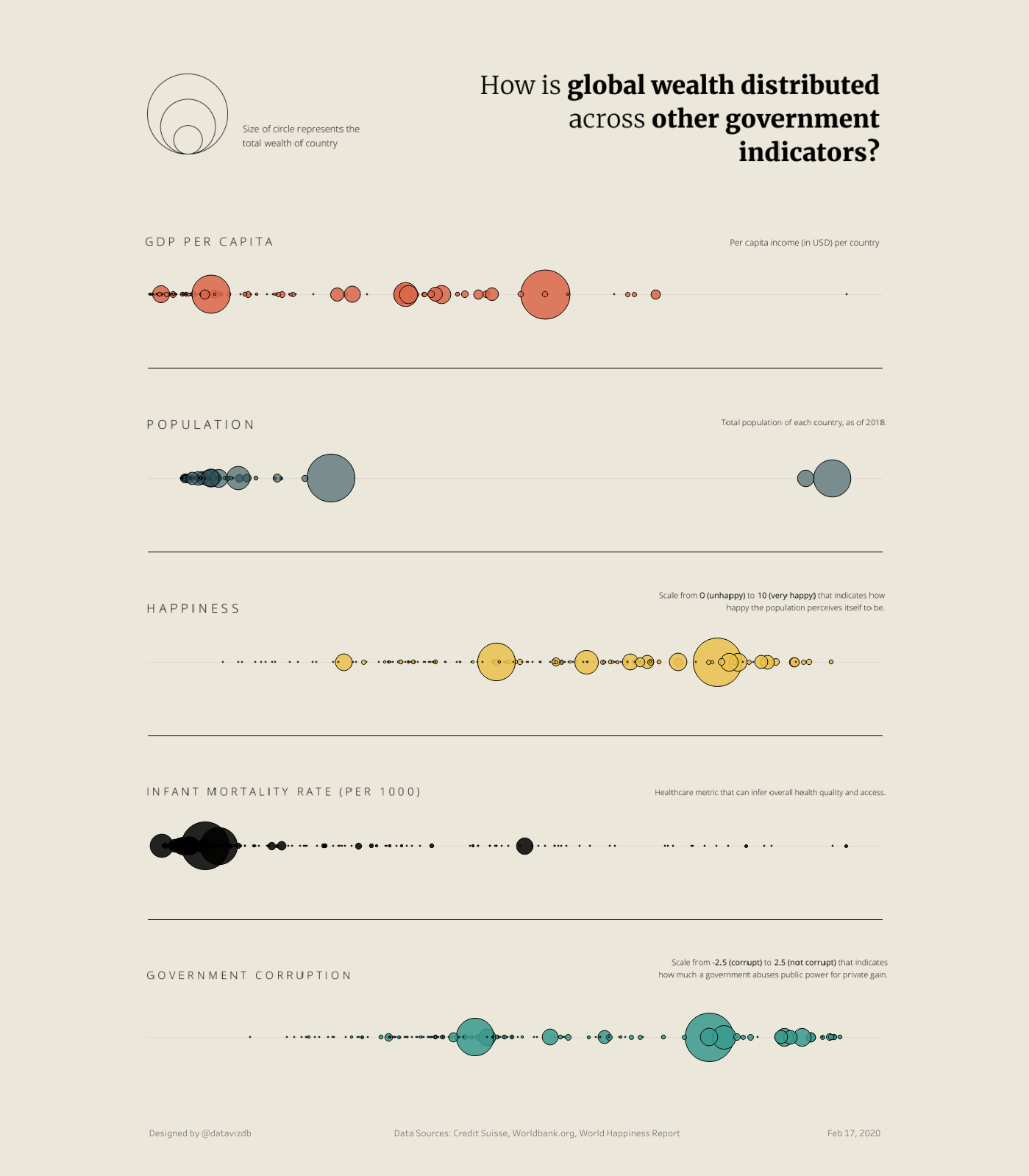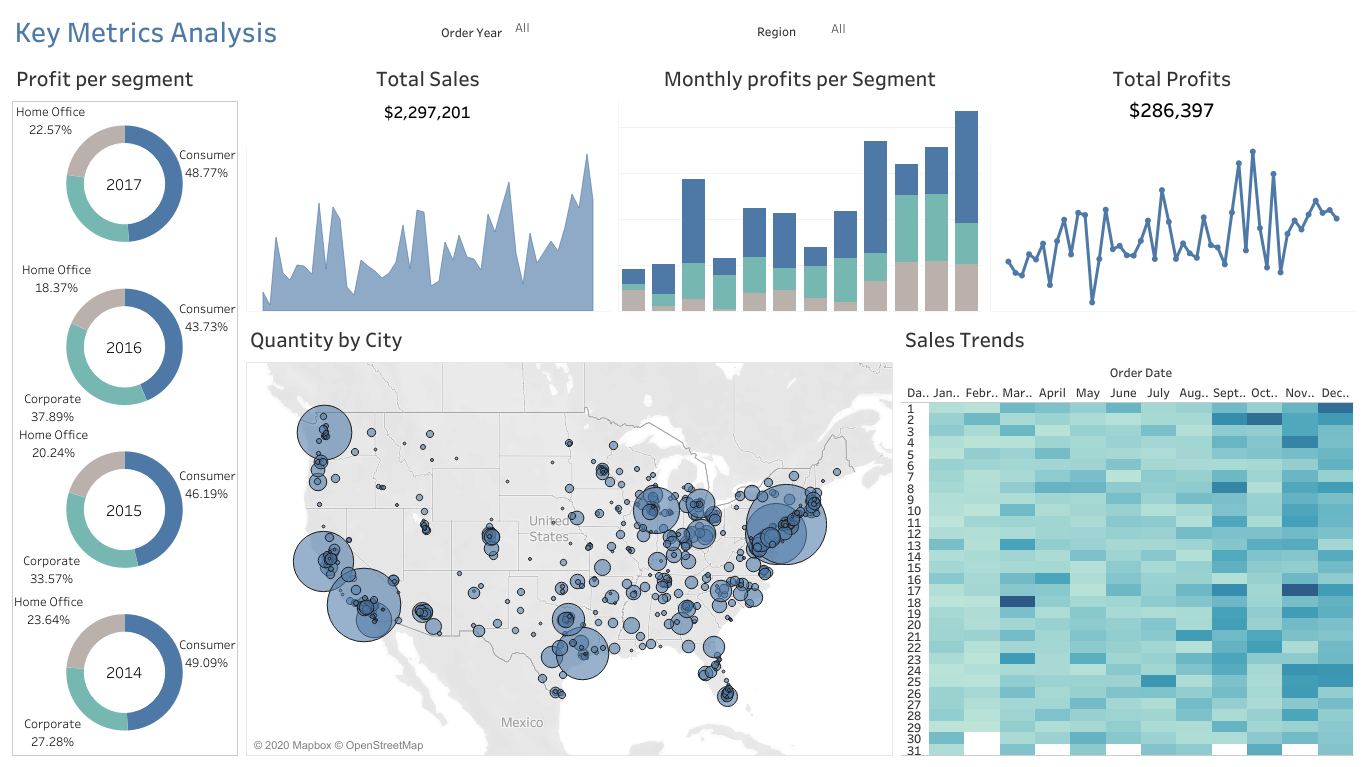When the Vision is clear, strategy is easy!
愿景明确后,战略就容易了!
Not long ago, the ability to create smart data visualizations, or data viz, was a nice-to-have skill. For the most part, it benefited design- and data-minded managers who made a deliberate decision to invest in acquiring it. That’s changed. Now visual communication is a must-have skill for all managers, because more and more often, it’s the only way to make sense of the work they do.
ñ加时赛不久前,创建智能数据可视化或数据即的能力,是一个很好的到了技能。 在很大程度上,它有益于设计和数据管理人员,他们明智地决定投资购买它。 改变了。 现在,视觉传达已成为所有经理的必备技能,因为越来越多的人,这是理解他们所做工作的唯一方法。
Data is the primary force behind this shift. Decision making increasingly relies on data, which comes at us with such overwhelming velocity, and in such volume, that we can’t comprehend it without some layer of abstraction, such as a visual one.
数据是这一转变的主要推动力。 决策越来越依赖于数据,数据以如此巨大的速度和如此之大的速度出现在我们眼前,如果没有某种抽象层(例如视觉层),我们就无法理解它。
Without visualization, detecting the inefficiencies hidden in the patterns and anomalies of that data would be an impossible slog. But even information that’s not statistical demands visual expression. Complex systems — business process workflows, for example, or the way customers move through a store — are hard to understand, much less fix, if you can’t first see them.
没有可视化,检测隐藏在该数据的模式和异常中的效率低下将是不可能的。 但是,即使不是统计信息也需要视觉表达。 复杂的系统(例如业务流程工作流或客户在商店中的移动方式)很难理解,如果您首先看不到它们,则很难修复。
Thanks to the internet and a growing number of affordable tools, translating information into visuals is now easy (and cheap) for everyone, regardless of data skills or design skills. This is largely a positive development.
得益于互联网和越来越多的负担得起的工具,现在,无论数据技能或设计技能如何,将信息转换为视觉图像对于每个人来说都变得容易(便宜)。 这在很大程度上是积极的发展。
数据可视化的内容和原因: (The What and Why of Data Visualization:)
Data visualization means drawing graphic displays to show data. Sometimes every data point is drawn, as in a scatter plot, sometimes statistical summaries may be shown, as in a histogram. The displays are mainly descriptive, concentrating on ‘raw’ data and simple summaries. They can include displays of transformed data, sometimes based on complicated transformations. One person’s statistics may be another person’s raw data. As with other aspects of working with graphics, it would be useful to have an agreed base of concepts and terminology to build on. The main goal is to visualize data and statistics, interpreting the displays to gain information.
数据可视化意味着绘制图形显示以显示数据。 有时会在散点图中绘制每个数据点,有时会在直方图中显示统计摘要。 显示主要是描述性的,集中于“原始”数据和简单的摘要。 它们可以包括有时基于复杂转换的转换数据显示。 一个人的统计数据可能是另一个人的原始数据。 与处理图形的其他方面一样,建立一致的概念和术语基础将很有用。 主要目标是可视化数据和统计数据,解释显示内容以获得信息。
Data visualization is useful for data cleaning, exploring data structure, detecting outliers and unusual groups, identifying trends and clusters, spotting local patterns, evaluating modeling output, and presenting results. It is essential for exploratory data analysis and data mining to check data quality and to help analysts become familiar with the structure and features of the data before them. This is a part of data analysis that is underplayed in textbooks, yet ever-present in actual investigations.
数据可视化对于数据清理,探索数据结构,检测异常值和异常组,识别趋势和聚类,发现局部模式,评估建模输出以及呈现结果非常有用。 探索性数据分析和数据挖掘对于检查数据质量并帮助分析人员熟悉其之前的数据结构和特征至关重要。 这是数据分析的一部分,它在教科书中没有发挥作用,但在实际调查中却经常出现。

Graphics reveal data features that statistics and models may miss: unusual distributions of data, local patterns, clustering, gaps, missing values, evidence of rounding or heaping, implicit boundaries, outliers, and so on. Graphics raise questions that stimulate research and suggest ideas. It sounds easy. In fact, interpreting graphics needs experience to identify potentially interesting features and statistical nous to guard against the dangers of over interpretation. Just as graphics are useful for checking model results, models are useful for checking ideas derived from graphics.
图形揭示了统计数据和模型可能会遗漏的数据特征:数据的异常分布,局部模式,聚类,缺口,缺失值,舍入或堆积的证据,隐式边界,离群值等等。 图形引发了激发研究和提出想法的问题。 听起来很简单。 实际上,解释图形需要经验来识别潜在的有趣特征和统计意义,以防止过度解释的危险。 正如图形可用于检查模型结果一样,模型可用于检查从图形得出的想法。
一张图片胜过千言万语: (A Picture Is Worth a Thousand Words:)
Famous sayings have a way of developing a life of their own. A picture is not a substitute for a thousand words; it needs a thousand words (or more). For data visualization you need to know the context, the source of the data, how and why they were collected, whether more could be collected, the reasons for drawing the displays, and how people with the necessary background knowledge advise they might be interpreted.
著名的谚语有一种发展自己的生活的方式。 图片不能代替一千个单词。 它需要一千个字(或更多)。 为了进行数据可视化,您需要了解上下文,数据源,如何收集和为什么收集它们,是否可以收集更多内容,绘制显示的原因以及具有必要背景知识的人建议如何对其进行解释。
The potential synergy of text and graphics can be appreciated by talking through your own graphics, explaining them to others. Why have you drawn those graphics? How have you drawn them? What can be seen? Are there interesting patterns? What could be changed and improved? Which other graphics might be drawn? How can conclusions be checked? There should be more talking about graphics and less relying on the graphics to speak for themselves.
通过讨论自己的图形,并向其他人解释,可以欣赏到文本和图形的潜在协同作用。 为什么要绘制这些图形? 你是怎么画的? 可以看到什么? 有有趣的模式吗? 有什么可以改变和改进的? 可能还会绘制其他图形吗? 如何检查结论? 应该更多地谈论图形,减少对图形本身的依赖。
When it comes to graphics you have not drawn yourself, the same kinds of questions are still relevant, although they may be more difficult to answer.
当涉及到图形时,尽管您可能更难以回答,但同样的问题仍然有意义。

演示和探索性图形: (Presentation and Exploratory Graphics:)
Presentation and exploratory graphics are quite different animals. In presenting your results, you may have space for only one graphic and no idea how many people may see it. If it appears in a newspaper or on television or the Web, your audience could be millions of people. The graphic should be well-designed and well-drawn with an effective accompanying explanatory text. On the other hand, if you are exploring data, then you need many, many graphics and they are for an audience of one: yourself. The individual graphics need not be perfect, but they should provide alternative views and additional information. Presentation graphics are used to convey known information and are often designed to attract attention. Exploratory graphics are used to find new information and should direct attention to information.
演示文稿和探索性图形是完全不同的动物。 在显示结果时,您可能只留一张图片的空间,却不知道会有多少人看到它。 如果它出现在报纸,电视或网络上,则您的受众可能是数以百万计的人。 图形应精心设计和绘制,并附上有效的解释性文字。 另一方面,如果您正在探索数据,那么您需要很多很多图形,这些图形只适合一个人:您自己。 各个图形不一定是完美的,但它们应提供其他视图和其他信息。 演示图形用于传达已知信息,并且通常旨在引起人们的注意。 探索性图形用于查找新信息,应直接注意信息。
Published graphics tend to be graphics for presentation, partly because they are for publication and partly because no one wants to see hundreds of quick graphics that may or may not have been helpful. It is rather like mathematical proofs: articles contain the elegant and concise final versions, not the scribbled notes and random ideas that came before.
已发布的图形往往是用于演示的图形,部分是因为它们是用于发布的图形,另一方面是因为没人希望看到数百个可能有用或可能没有帮助的快速图形。 它就像是数学证明:文章包含简洁明了的最终版本,而不是之前的notes草笔记和随机想法。

Exploratory graphics take advantage of how easy it is now to draw and redraw graphics. What used to be a slow and wearisome process, even including having to print out displays, has become fast and flexible. At the same time, new, additional skills are required. Identifying interesting features and knowing how to check them in more detail among a myriad of possible graphics is not just a matter of drawing many graphics, you need interpretative skills and an appreciation of which graphics will provide what kinds of information. There is so much that can be varied: the variables displayed, the types of graphics, the sizes of graphics and their aspect ratios, the colors and symbols used, the scales and limits, the ordering of categorical variables, the ordering of variables in multivariate displays. Selecting from the wide range of graphics wisely, and understanding how to gain insights, are not trivial tasks. The lack of a theory of data visualization to guide and build on is a key issue.
探索性图形利用了现在绘制和重新绘制图形的简便性。 过去这是一个缓慢而令人厌烦的过程,甚至包括必须打印出显示器,但现在已经变得快速而灵活。 同时,还需要新的附加技能。 识别有趣的功能并知道如何在众多可能的图形中进行更详细的检查,不仅是绘制许多图形的问题,还需要您具有解释能力,并且需要了解哪些图形将提供哪些类型的信息。 有很多可以变化的地方:显示的变量,图形的类型,图形的大小及其宽高比,使用的颜色和符号,比例和界限,类别变量的顺序,多元变量的顺序显示。 明智地从各种图形中进行选择,并了解如何获得见识,并不是一件容易的事。 缺乏指导和建立数据可视化的理论是一个关键问题。
经验法则- (Rules of Thumb-)
Here are some rules that one visualizer should always follow while drawing a viz.
这是一些可视化工具在绘制视点时应始终遵循的一些规则。
1.清理您的数据: (1. Clean Your Data:)
Take the time to clean your data before you try to build your visualization. Make sure only the first row contains labels, and each cell contains a single data point. This may seem like a tedious step, but it will make the rest of your analysis a smoother experience. One can use the Data Interpreter of Tableau to lighten the load.
在尝试构建可视化文件之前,请花一些时间清理数据。 确保仅第一行包含标签,并且每个单元格包含一个数据点。 这似乎是一个繁琐的步骤,但是它将使您的其余分析变得更顺畅。 可以使用Tableau的数据解释器减轻负载。
2.选择重要的指标: (2. Choose metrics that matter:)
Choosing the right metrics to include in your dashboard is crucial. Above all, the metrics should help get to what you’re trying to learn and what you’re trying to convey. That doesn’t mean every metric should be included — far from it. You should be highly selective in choosing the metrics that earn a spot on your dashboard.
选择正确的指标以包含在仪表板中至关重要。 最重要的是,这些指标应有助于您了解要学习的内容以及要传达的内容。 这并不意味着每个指标都应包括在内-距离它很远。 您应该在选择在仪表板上赢得一席之地的指标时保持高度的选择性。
In order to find the right set of metrics to include, consider the following:
为了找到正确的指标集,请考虑以下因素:
How does each metric contribute to the objective of your project or research?
每个指标如何有助于您的项目或研究目标?
Can you design a meaningful metric that measures those contributions?
您可以设计一个有意义的指标来衡量这些贡献吗?
Is this metric truly necessary, or does it distract from more important information?
这个指标真的必要吗,还是分散了更多重要信息的注意力?
Litmus test: Can you clearly explain how every metric on your dashboard connects to your objectives?
石蕊测试:您能否清楚说明仪表板上的每个指标如何与目标联系起来?
3.使用可视工具并添加交互性: (3. Use visual tools & add interactivity:)
Dashboards are meant to be fast and easy to read. Number-based tables and spreadsheets are usually the opposite. When it comes to data, a picture really is worth a thousand words. We comprehend insights faster when data is displayed visually as graphs and charts on a dashboard.
仪表板的意思是快速且易于阅读。 基于数字的表和电子表格通常相反。 当涉及数据时,一张图片确实值一千个字。 当数据在仪表板上以图形和图表的形式直观显示时,我们可以更快地理解见解。
And do add interactivity to allow other users to ask and answer their own questions. That way, your exploration can go beyond the questions you anticipated when building your dashboard.
并增加交互性,以允许其他用户提问和回答自己的问题。 这样,您的探索就可以超出构建仪表板时预期的问题。

4.放弃PowerPoint for Tableau故事点: (4. Ditch PowerPoint for Tableau Story Points:)
Tableau Story Points helps share the story behind your data, and makes for a great presentation tool. With Story Points, you can include interactive dashboards in your presentation in place of static graphs or images. This means you can explore data and answer questions you may not have anticipated when putting together the presentation.
Tableau Story Points帮助您共享数据背后的故事,并成为一个出色的演示工具。 使用故事点,您可以在演示文稿中包括交互式仪表板,以代替静态图形或图像。 这意味着您可以浏览数据并回答在组合演示文稿时可能没有想到的问题。
If you like the design functionality of PowerPoint, try using blank dashboards as slides. You can insert images, text, and even web pages into dashboards to create a visually compelling presentation. Enter presentation mode to flip through slides just like you would with PowerPoint. And use the data to ask and answer questions that rise during the discussion.
如果您喜欢PowerPoint的设计功能,请尝试使用空白的仪表板作为幻灯片。 您可以将图像,文本甚至网页插入仪表板中,以创建视觉上引人注目的演示文稿。 进入演示模式可以像使用PowerPoint一样翻阅幻灯片。 并使用数据提问和回答讨论中提出的问题。
5.分享您的工作并建立您的投资组合: (5. Share your work and build your portfolio:)
Sharing information is what dashboards are all about. And sharing your skill set with potential employers is what college is all about. Publish your dashboards to Tableau Public, then access and share them using any web browser.
信息共享就是仪表板的全部内容。 与潜在的雇主分享您的技能是大学的全部目的。 将仪表板发布到Tableau Public,然后使用任何Web浏览器访问和共享它们。
Build up your profile to showcase your analytical capabilities; in today’s marketplace, it’s a critical skill for your next step, whether you’re planning for grad school or your first job.
建立个人资料以展示您的分析能力; 在当今的市场中,这是下一步工作的一项关键技能,无论您是打算读研究生还是第一份工作。

结论: (Conclusion:)
As we conclude our brief study on data visualization, it is clear that the field is rich in potential applications in diverse disciplines, at the same time we need to be aware of its practical and ethical complexities. We have discussed several examples of data visualizations, learning common pitfalls and helpful tricks along the way. As we have seen, developing an effective and ethical data visualization is a complex process.
当我们结束对数据可视化的简要研究时,很明显,该领域在不同学科中具有丰富的潜在应用,与此同时,我们需要意识到其实际和道德上的复杂性。 我们讨论了数据可视化的几个示例,在此过程中学习常见的陷阱和有用的技巧。 如我们所见,开发有效且符合道德的数据可视化是一个复杂的过程。
数据可视化的未来: (The Future of Data Visualization:)

Data visualization is entering a new era. Emerging sources of intelligence, theoretical developments and advances in multidimensional imaging are reshaping the potential value that analytics and insights can provide, with visualization playing a key role. The principles of effective data visualization won’t change. However, next gen technologies and evolving cognitive frameworks are opening new horizons, moving data visualization from art to science.
数据可视化正在进入一个新时代。 新兴的情报来源,多维成像的理论发展和进步正在重塑分析和见解可以提供的潜在价值,而可视化起着关键作用。 有效的数据可视化的原理不会改变。 但是,下一代技术和不断发展的认知框架正在打开新的视野,将数据可视化从艺术转移到科学。
Looking back, much attention has been given to the principles of effective data visualization, such as substance, context and action-ability.
回顾过去,人们已经对有效数据可视化的原理给予了极大关注,例如实质,上下文和可操作性。
Vision without execution is just hallucination!
没有执行力的愿景只是幻觉!
By: Mahima Rathod
创建人:Mahima Rathod
September 2020
2020年9月
翻译自: https://medium.com/analytics-vidhya/speak-loudly-speak-visually-f614ca08e6c8






















 8597
8597











 被折叠的 条评论
为什么被折叠?
被折叠的 条评论
为什么被折叠?








